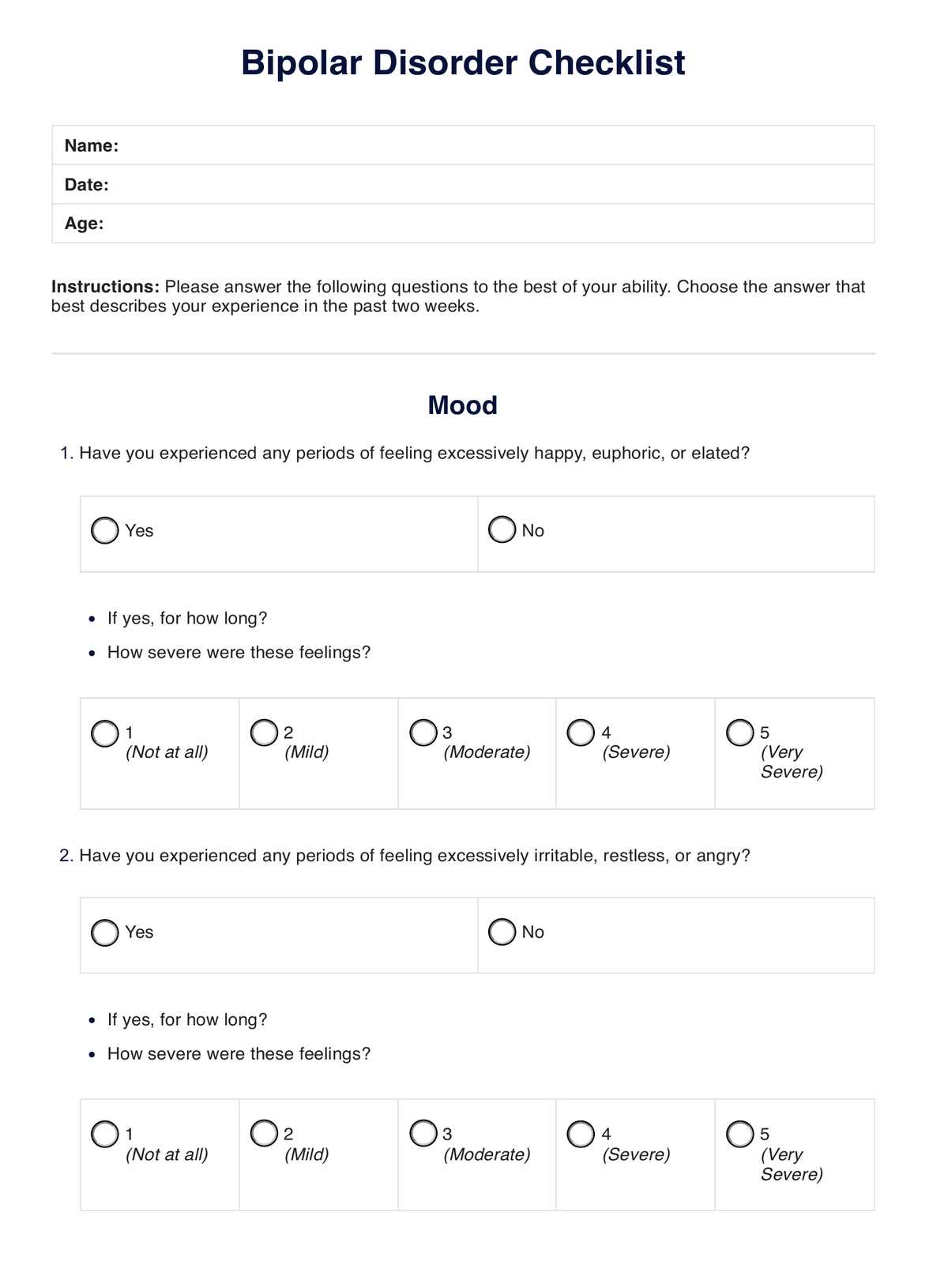Bipolar Checklists are created by mental health professionals or organizations that develop standardized assessments such as Carepatron

Bipolar Checklist
The Bipolar Checklist Template streamlines communication between individuals with bipolar disorder and healthcare professionals.
Use Template
Bipolar Checklist Template
Commonly asked questions
Bipolar Checklists are used when healthcare professionals need to screen for potential cases of bipolar disorder or when individuals suspect they may have the condition.
Bipolar Checklists are used by healthcare professionals to evaluate various aspects of bipolar disorder symptoms, including mood swings, energy levels, sleep patterns, and behavior.
EHR and practice management software
Get started for free
*No credit card required
Free
$0/usd
Unlimited clients
Telehealth
1GB of storage
Client portal text
Automated billing and online payments











